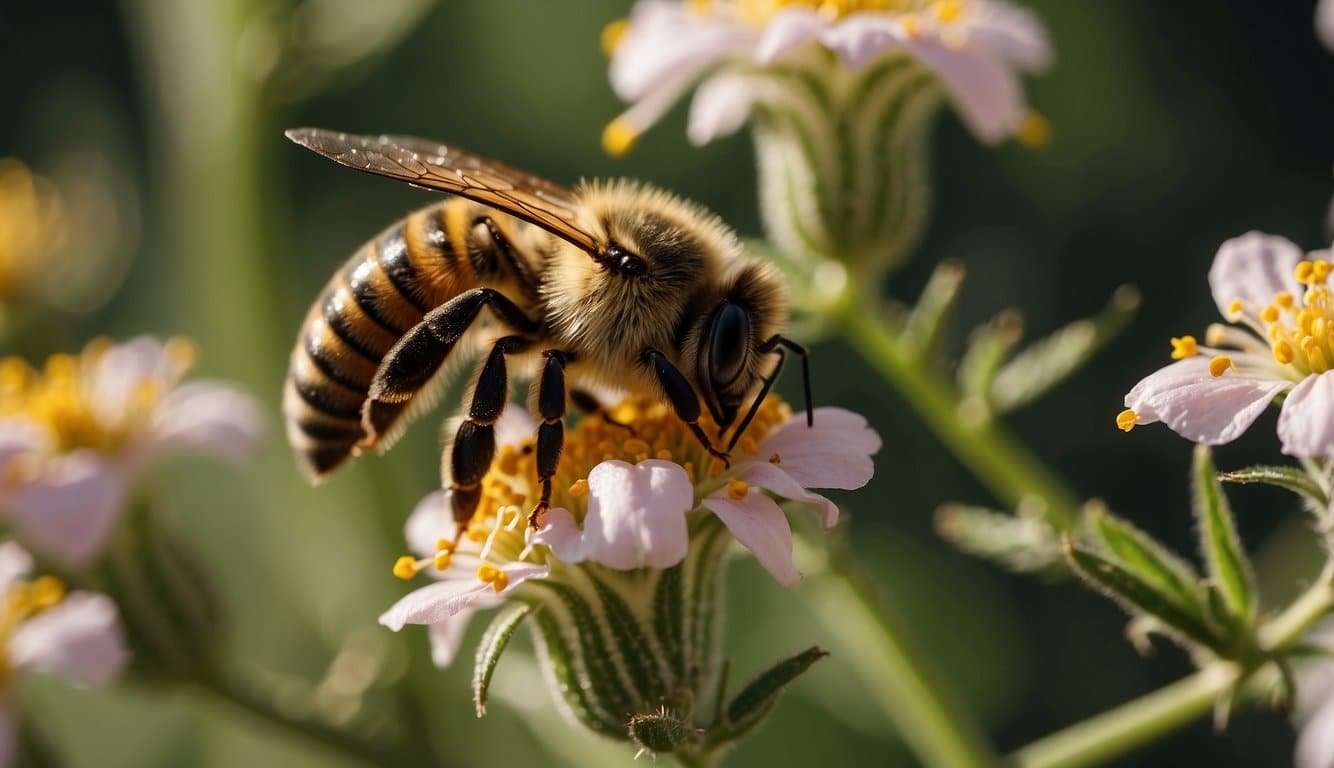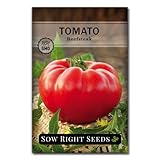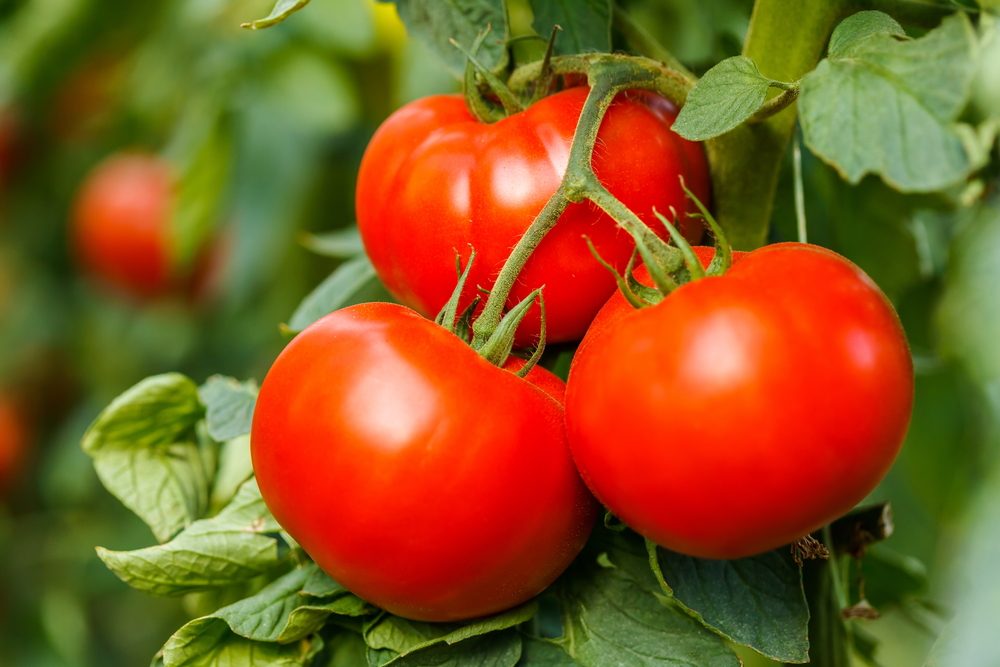Tomato plants, with their lush green foliage and vibrant fruits, are a favorite among vegetable gardeners. Yet, despite their popularity, there is often a need to assist them during pollination to ensure a bountiful harvest.
You might not be aware, but pollination is a critical step in the life cycle of tomato plants, enabling fruit development. Under natural conditions, this process is typically facilitated by the wind or by the buzzing of bees.
However, factors like inadequate pollinator presence, high humidity, or growing tomatoes indoors can hinder this natural process.
If you’re facing such challenges, learning how to hand pollinate tomatoes could be the secret to enhancing your harvest. The technique is straightforward and can significantly increase the number of tomatoes you get from your garden.
It involves simulating the natural process that occurs when pollinators or the wind transfer pollen from the stamen, the male part of the flower, to the stigma, the female part.
By mastering a few simple methods, you’ll be well-equipped to ensure that your tomato flowers are successfully pollinated and ready to develop into ripe, delicious fruits.
Tomato Pollination: 101
Pollination is crucial for your tomato plants to bear fruit. This process involves the transfer of pollen from the anthers to the stigma, and understanding the biology of your tomato plants and the pollination process will help ensure a successful harvest.
Tomato Plant Biology
Your tomato plants are typically self-pollinating, which means they have both male and female parts within the same flower.
The male part, called the stamen, produces pollen, while the female part, known as the pistil, contains the stigma.
When conditions are right, the pollen travels from the stamen to the stigma, leading to fertilization and fruit development.
- Stamen (Male)
- Anthers: Produce pollen
- Filament: Supports the anthers
- Pistil (Female)
- Stigma: Receives pollen
- Style: Tube leading to the ovary
- Ovary: Develops into the fruit after pollination
Pollination Process
The pollination process in tomatoes can occur naturally, often with the help of wind or the plant’s own vibrations. However, in situations like greenhouse growing or periods of low wind, you may need to assist in the pollination.
Natural Pollination:
- Wind vibrations shake pollen loose
- Pollen falls onto stigma
Assisted Pollination Methods:
- Gently vibrate the flower stem or tap the main stem
- Use a small paintbrush or cotton swab to transfer pollen
- Employ a small electric toothbrush to mimic natural vibrations
Remember to pollinate multiple times a week to maximize fruit set. Do this midday when the temperature is between 70-85°F (21-29°C), which is when pollen is most viable.
Pollination Techniques
Achieving successful tomato pollination leads to fruitful yields. Here, you’ll learn methods to ensure your tomatoes are well-pollinated, relying both on manual techniques and natural pollinators.
Manual Pollination Methods
Shaking Plants: Gently shake your tomato plants to mimic wind, helping release pollen. This should be done during the warm part of the day when pollen is most viable.
Electric Toothbrush: An electric toothbrush can be used to vibrate the tomato plant’s flowers, simulating the buzzing of bees, which encourages pollen to fall from the anthers to the stigma.
- Using a Small Brush or Cotton Swab: Carefully swipe the pollen from the anthers and then to the stigma using this hand pollination method.
Flower Tapping: Tap the back of the flower with your fingers or a small implement to release the pollen onto the stigma.
Using Pollinators
Attracting Bees: Plant bee-friendly flowers or set up a bee habitat near your tomato plants to entice these natural pollinators.
Installing a Beehive: For larger gardens, consider installing a beehive which can provide a steady population of bees for pollination.
Optimizing Pollination Conditions
Achieving successful tomato pollination hinges on managing specific environmental parameters and providing meticulous care to your tomato plants. By optimizing these conditions, you can enhance the pollination process and encourage a more abundant tomato yield.
Environmental Factors
Temperature and Humidity:
- Ideal temperature range: 60-75 degrees Fahrenheit
- Optimal relative humidity: 40-70%
To foster effective pollination, carefully manage the greenhouse environment.
Monitor the temperature using a reliable thermometer, and adjust ventilation accordingly.
Use a hygrometer to gauge the humidity levels and employ dehumidifiers or humidifiers as needed to maintain the proper range.
Caring for Tomato Plants
Pollination Techniques:
- Gently shake the stems or use an electric toothbrush to mimic the natural vibration caused by bees.
- Use a small paintbrush or cotton swab to transfer pollen to the stigma.
Plant Maintenance:
- Regularly check for pests and disease, and treat promptly to avoid disruptions in pollination.
- Ensure adequate spacing between plants to facilitate air circulation, reducing potential pollination issues.
Frequently Asked Questions
Mastering the art of pollinating tomato plants can significantly increase your harvest. Each question below addresses key techniques and tips to ensure your tomatoes are pollinated effectively.
What is the correct technique for hand pollinating tomato plants?
To hand pollinate tomato plants, gently tap or shake the flower’s stem to mimic the natural vibrations caused by bees or wind. This action releases the pollen from the stamens onto the pistil, leading to fertilization. Consistent and gentle is the approach you’re aiming for.
How can one identify if a tomato flower has been successfully pollinated?
A tomato flower that has been successfully pollinated will begin to wither and the base of the flower will start to swell, developing into a fruit. The flower’s petals will generally dry up and fall off within a few days post-pollination.
What methods are effective for pollinating tomatoes grown in greenhouses?
Greenhouse tomatoes benefit from methods like using a vibrating pollination tool, or even introducing bumblebees specifically for pollination purposes.
Ensuring good airflow and regulating humidity can also facilitate successful pollination.
Can you describe the process of using a paintbrush for tomato pollination?
Using a soft paintbrush for tomato pollination involves gently brushing the pollen-laden stamens and then touching the pistil of the same flower or others to transfer the pollen. This action imitates a bee’s movement from flower to flower.
Is it possible to pollinate tomato plants using a Q-tip, and how is this done?
Certainly, a Q-tip can be an effective tool for pollination. Swirl the Q-tip around the inside of a flower to pick up pollen and then proceed to lightly dab it onto the pistils within the same flower or other flowers to spread the pollen.
Are there any particular benefits to using tomato pollination sprays?
Tomato pollination sprays can provide a hormone that encourages the plant to set fruit, especially in conditions where natural pollination is inadequate.
However, they should be used as an adjunct to, not a replacement for, physical pollination methods.
Last update on 2025-06-06 / Affiliate links / Images from Amazon Product Advertising API




